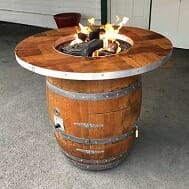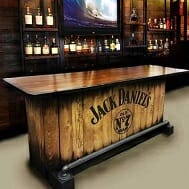Today, we’ve got an amazing guest post from ilovewine.com
If you’re the type of person that likes to have a glass of wine with dinner, or when you’re hanging out with friends, or any time at all, you want to know what it’s all about, right? You want to know if it’s good for you, bad for you or some form of indifferent, and one of the ways you may judge that is by how many carbs in wine are there. You may have heard that wine is low-carb, but there’s a big difference between low-carb and no-carb. So what does it mean?
Are There Carbs in Wine?
The short answer is yes. Of course, that’s going to vary based on a number of different factors. For one, not all wine has carbs. Some wines actually don’t have any. But, many wines have at least 2 and up to 5 carbs per 5 ounces glass. This means if you’re really being particular about carbs and counting yours you’ll want to watch the number of glasses you drink. You’ll also want to think carefully about the types of wine that you’re drinking.
The lowest carb wines are the dry versions. These include things like general dry wines, dry sherry, dry red and dry white wines. Each of these typically has closer to the bottom of the spectrum when it comes to carbs. They are actually close to 0-3 carbs. When it comes to sparkling wine and off-dry wines, that’s where you’re going to get closer to the five carbs per glass. Of course, all of this is much less than the number of carbs you’ll find in liquors, Kahlua and late harvest or tawny drinks, so you’re still getting something slightly better for you.

The perfect handsome wine aerating decanter gift set
(click image to find out more)
How Do Carbs Even Get There?
So, how do the carbs in wine even get there? Where do they come from? Well, they come from the unfermented sugar that’s left over after the alcohol is produced. When it comes to wine, you’ll find more carbs left over at the end than some drinks because they start out with a whole lot of sugar. Those grapes have a lot of carbs in them, but as they’re fermented the carbs start to disappear because of the yeast. What’s left over, however, becomes the carbs in the wine.
The same thing happens with beer and some other mixers because they have a lot of sugar or grain that contains carbs and leaves some left over. Mixers are the worst of it because they’re not fermented at all and are only added to the already fermented beverage. You’re going to have no carbs in things like distilled spirits because there’s only alcohol left in there with absolutely none of the sugar or grain. That means carb wise you’re getting the best from pure alcohols, but you’re getting some other things that you should watch out for.
Getting Healthy With Alcohol
What do you do if you’re trying to get healthy, but you like to drink the occasional glass of wine? Well, the truth is that wine and other forms of alcohol have been found to be really bad for people who are dieting. It’s not just the carbs in wine and the calories they have. It’s actually that people who drink alcohol have been found to eat a whole lot more, up to 400 calories. If you really like to have a glass once in a while you can account for it, and the low carbs make it okay for most diets, but keep track of your eating habits.
On top of this, keep in mind that alcohol can stop your body from burning fat, which is what you’re trying to do when you’re dieting. The alcohol is burned off by the body first, and if that happens, it means that fat is being stored. The alcohol doesn’t store into your body, but it does indicate that you’re going to have significantly reduced results than you might think because of the alcohol that you’re drinking. Most dieticians would recommend that you cut out alcohol entirely, or as much as possible, for this reason.

The Personalized Vintage Winery Sign
(click image to find out more)
Are Carbs in Wine Really That Bad?
That’s not as easy of a question to answer. Carbs in wine increase the blood sugar in your body when they are absorbed into the blood. When this happens, the body releases insulin to help control the blood sugar. To help lower the blood sugar the sugar itself is directed into fat cells so that you have more energy stored away. Then, the carbs make it difficult for the fat to be converted back into sugar and burned off. This means that carbs increase the amount of fat that’s being stored in your body and make sure that it stays there.
In the days of our ancestors this was a good thing because there was a lot of sugar intensive produce around during the warm seasons, but not much available during the cold season. If our ancestors were able to pack on some stored fat during the warm months, they would burn it off during the cold ones but would have enough nutrients to keep them going. For us now this isn’t as big of a problem, so the extra fat tends to make it difficult to get to that weight goal.
If you’re trying to lose some weight or even just watch your carb intake, you should definitely be looking at the wine that you consume. While there isn’t a whole lot there, it is enough that you’ll want to keep track. Plus, now that you know more about what carbs are really doing to your body and how they can negatively affect your goals you may want to think twice. Even that 2-5 carbs per glass in a single day can start to add up and before you know it you’ve got more fat stored than you ever wanted. So keep an eye on that glass of sherry.
You can read the original article at ilovewine.com









